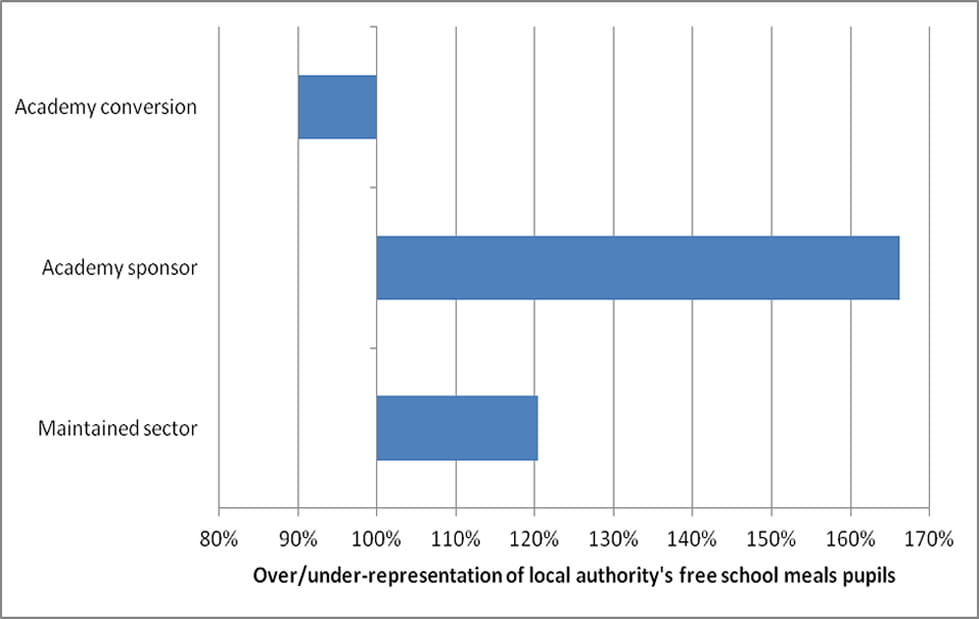Yes, they’re young and inexperienced. But Teach First participants have the right stuff
By Blog Editor, IOE Digital, on 5 September 2013
Rebecca Allen
Today, Jay Allnutt and I published a new piece of analysis (PDF) showing that schools taking on Teach First participants have achieved gains in their GCSE results as a result of the programme. Our analysis tracks the performance of these schools in the first three years after they join the programme and compares them to changes in progress at a set of schools that look identical, except for their Teach First participation in that year.
We make sure this comparison set of schools have the same pupil demographic profile, the same prior levels and trends in GCSE performance, are in the same region of England and are all schools who will choose to join Teach First at some point in the future (formally this is known as a matched difference-in-differences panel estimation). Overall, school-wide gains in GCSE results are in the order of an improvement of about one grade in one of a pupil’s best eight subjects. This estimate is a fraction of the size claimed by the only other quantitative evaluation by Muijs et al (PDF), but is still large enough to be of value to schools.
Like many, until I wrote this research I was sceptical that Teach First participants could possibly have any sort of transformative effect on schools. The academic research tells us that we don’t know much about what good teachers look like before they join the profession. We just know they are likely to be relatively ineffective in their first year of teaching, compared to their second and subsequent years. So, to my mind, setting up a scheme that legitimises exit from the profession after just two years seemed like lunacy.
Furthermore, to someone who trained to become a teacher for a whole year and still found my first year in the classroom extremely exhausting and challenging, it did seem rather reckless to place young graduates into challenging classrooms with so little time to prepare.
But on reflection, I now think Teach First provides important lessons for recruitment to the teaching profession as a whole.
I believe Teach First reminds us of the importance of selecting the right teachers at the outset
Even in the depths of recession in 2010 there were just 3 applicants for each place on a traditional graduate training course (PGCE, PGDE and GTP). By contrast, at the same time Teach First was processing about eight applications for every place. Without needing to make claims about the relative qualities of the respective pools of applicants, it is easy to see how Teach First is able recruit an intake with greater potential, provided their sifting process can do a reasonable job of spotting those with the drive, resilience and stamina needed to succeed in the classroom.
Recent academic papers from the US explain that getting this initial selection of teachers right is critical because, whilst a first year novice teacher is less effective than they will be in year two, the improvement in teaching quality gained through experience is actually relatively modest compared to the very wide variation in teacher quality at the outset. Furthermore, those who are weak teachers in year one improve their practice at a slower rate than others, thus widening gaps in effectiveness in years two, three and four.
Giving graduates an exit path after two years may be an important recruitment device
It is hard to really know whether you’ll love teaching before you try it. The great pleasures of teaching are rather strange compared to other graduate jobs and many 21 year old graduates will have had little contact with young children in recent years. Given this, while many graduates hesitate about training to join the teaching profession (forever?), they may feel more able to join a scheme with a straightforward exit route after two years. If they find they need to (which most don’t), they can walk away with a sense of completion rather than as a ‘failure’ or ‘drop-out’. And the greatest success of Teach First takes place when a graduate who fully intended to move onto a job in the City or in Law completes their two years and finds they are unable to rip themselves away from the delight and gratification of educating the next generation.
 Close
Close



